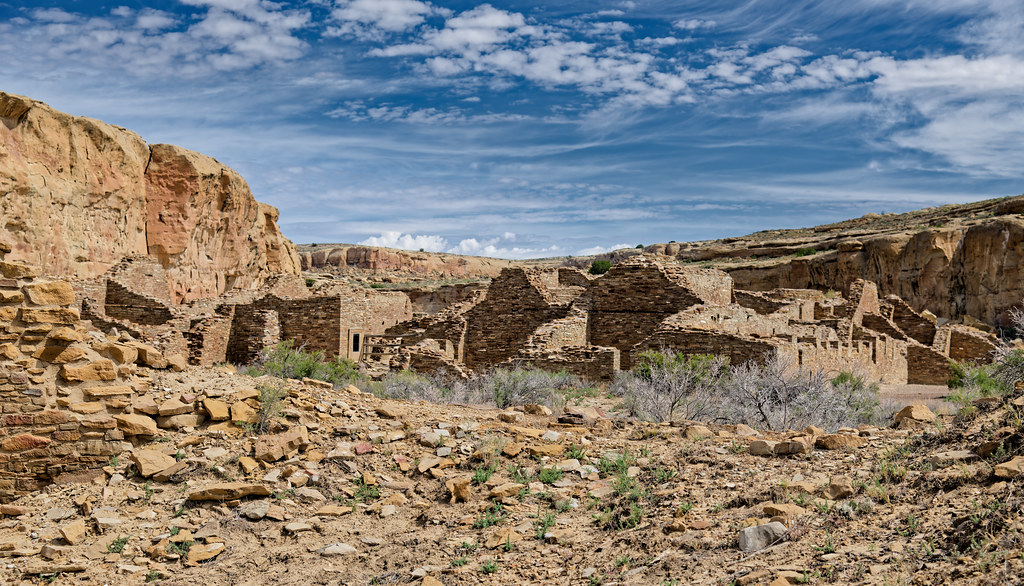#Ancestral Puebloan culture
Text



Pueblo Bonito, in Chaco Canyon, was occupied from 828 and 1126 CE. It was the largest of the great houses in what may have been a ceremonial center.
Explore Chaco:
#travel#architecture#history#wandering#original photography#chaco canyon#archaeology#ancestral puebloans#ancient architecture#native american#new mexico#chaco culture#national park service#national park#lensblr#photography#wanderingjana
252 notes
·
View notes
Text
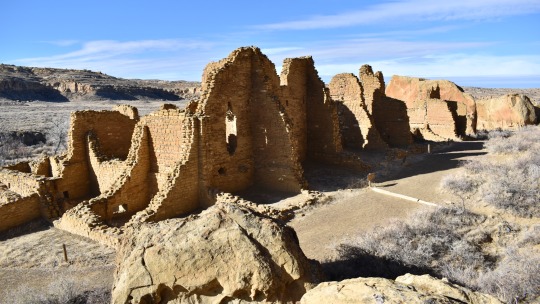

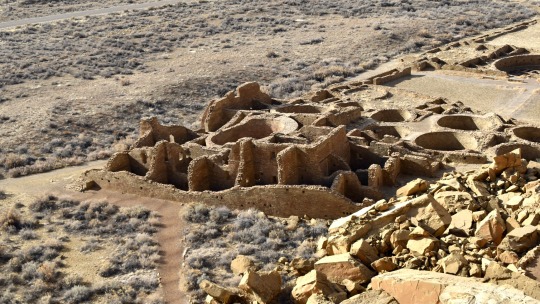
#chaco culture national historical park#chaco canyon#archaeology#anthropology#history#Indians#american indians#native Americans#anasazi#Chaco#ancestral puebloans#adventure#travel#my photo#southwest#desert#new mexico
219 notes
·
View notes
Text

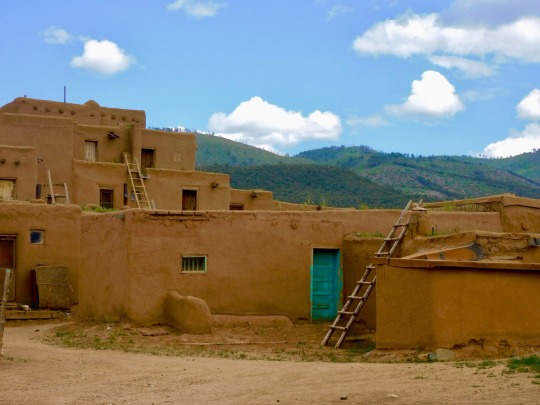
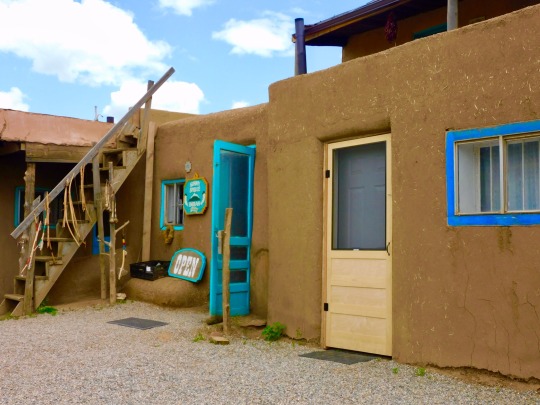

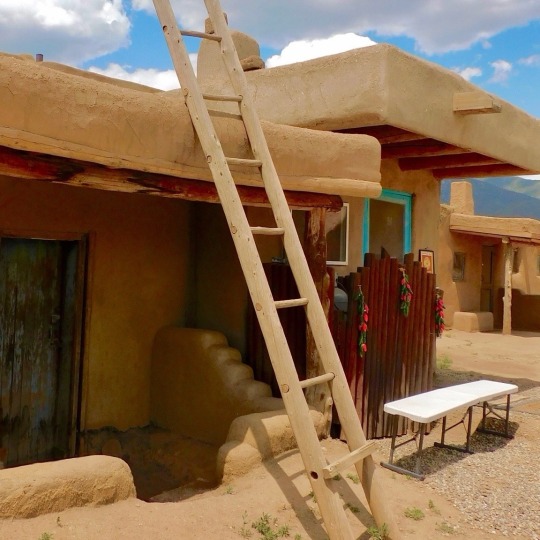
Taos Pueblo, NM
here are some more photographs of the buildings found in Taos Pueblo in efforts to show appreciation towards the traditional architecture
it was such a privilege being able to visit the Pueblo and immerse myself with the environment, the experience was worth the trip
#new mexico#pueblos indígenas#building#architecture#ancestral puebloans#traditional design#native american#landscape#photography#religious#culture#ancestors#nature#respect#sacred space#architecture photography#summer#june#beautiful#home#travel#road trip#business#my photgraphy
40 notes
·
View notes
Photo
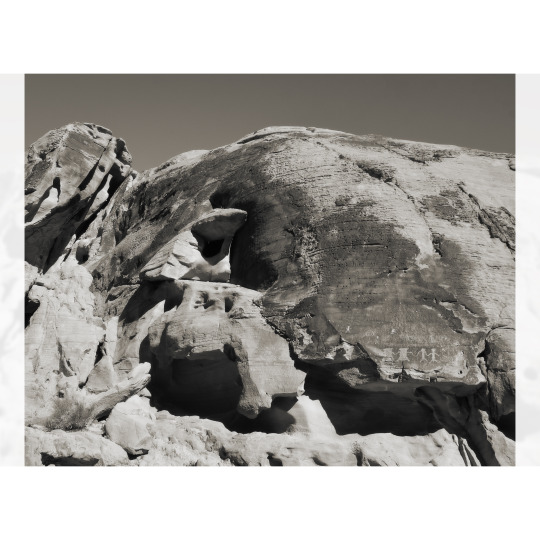
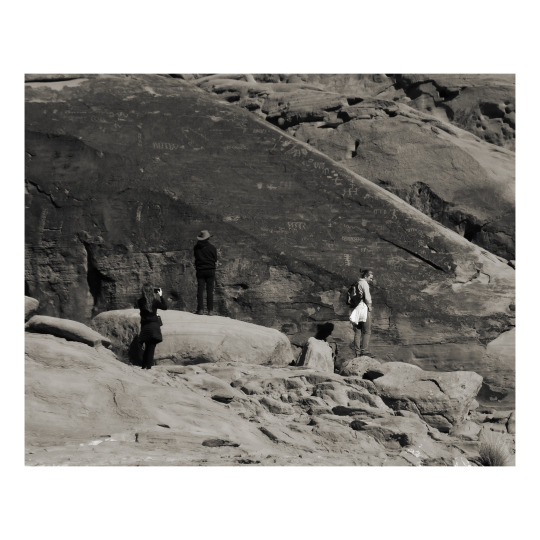


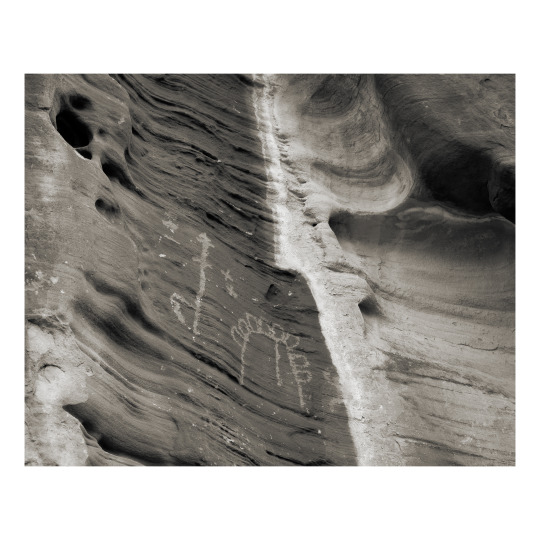
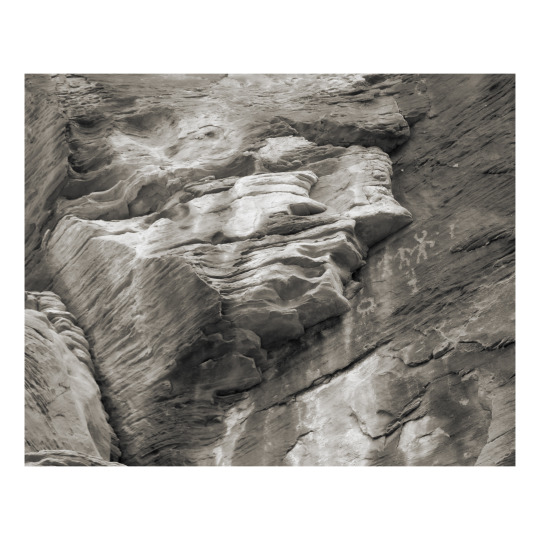
Basketmaker culture and early Puebloan petroglyphs at Mouse’s Tank trail. In the Valley of Fire State Park, Clark County, Nevada.
Please click any photo in the set for enlarged views.
#photographers on tumblr#petroglyphs#Basketmaker culture#Ancestral Puebloan culture#Mouse's Tank#Valley of Fire State Park#Clark County#Nevada
105 notes
·
View notes
Photo

Photographer 📸 @desertmoon2020 on Instagram
- "Chetro Ketl - Ancestral Puebloan great house in Chaco Culture National Historical Park, NM."
#native american#ancestral puebloan#new mexico#chaco canyon#travel#road trip#day trip#off the beaten path#weekendgetaway#darkskies#culture#history#heritage
59 notes
·
View notes
Video
Wide-Angle, Panoramic Setting for Chetro Ketl (Chaco Culture National Historical Park) by Mark Stevens
Via Flickr:
A setting looking to the east while taking in views and walking around the ruins present in the Chetro Ketl area of Chaco Culture National Historical Park. I later worked with control points in DxO PhotoLab 7 and then made some adjustments to bring out the contrast, saturation and brightness, as well as cropping portions of the foreground and skies above for a wide-angle feel to this setting in northern New Mexico.
#Ancestral Puebloans#Azimuth 72#Blocks#Blue Skies#Blues Skies with Clouds#Chaco Culture National Historical Park#Chaco Interior Wall#Chaco-San Juan Basin#Chacoan Culture#Chetro Ketl#Cliff#Cliff Face#Cliff Wall#Cliffs#Colorado Plateau#Day 2#Desert Landscape#Desert Mountain Landscape#Desert Plant Lifes#DxO PhotoLab 7 Edited#Intermountain West#Landscape#Landscape - Scenery#Log and Stone Construction#Looking East#Mesa#Nature#New Mexico and Mesa Verde National Park#Nikon D850#No People
2 notes
·
View notes
Note
Are you native? I am too I’m lakota!
Ah unfortunately I'm not, but I'm so glad to hear that I have indigenous people in my followers!
I'm irish, but I've always wanted to learn and understand the native people in what's now America, especially since the irish and indigenous have a long history of supporting each other.
The powwow was open to the public and I wanted to learn and support local tribes so I was super happy I got to go! I learned a lot and saw amazing things, I loved the fancy shawl dance and the MC calling the dancers storytellers just really struck something in me
#especially since i wrote TF i've wanted to make sure i'm respectful of indigenous cultures#since westerns are rooted in a racist history#i tried my best to listen to NDN voices and be respectful whilst writing#but i know as a yt person i'll never truly understand#so i want to learn#and support#it was always my plan if TF ever blew up like other fics I'd use the fame to support indigenous people especially within the fandom#that and my new job places heavy focus on working with local tribes#especially in caring for ancestral puebloan artifacts we have in the park#i really wanted to invite people to come cause we let NDN in free but i didn't know how to say#plus i didn't want to speak up or be disrespectful while dancers were dancing
2 notes
·
View notes
Text
Hell's Backbone - Wandering and Pondering
Ananzi, Ancestral Puebloans
Hell’s Backbone
The snowy peaks of the Hell’s Backbone mountains seemed to be on fire as the first rays of the sun peaked over the ridge to the east. It’s a cold October morning in Boulder, Utah, pop 236. After a few encouraging words, my vintage Bronco reluctantly sputters to life as I continue to wander southern Utah’s back and further back roads. I am mesmerized by…

View On WordPress
#ananazi#ancestral Puebloan#bolder#Culture#Fiction#Fine Art Photography#hell&039;s backbone#Landscape#Photography#road trip#Ron Mayhew#short fiction#Travel#Utah
0 notes
Note
Hey, would you be willing to elaborate on that "disappearance of the Anasazi is bs" thing? I've heard something like that before but don't know much about it and would be interested to learn more. Or just like point me to a paper or yt video or something if you don't want to explain right now? Thanks!
I’m traveling to an archaeology conference right now, so this sounds like a great way to spend my airport time! @aurpiment you were wondering too—
“Anasazi” is an archaeological name given to the ancestral Puebloan cultural group in the US Southwest. It’s a Diné (Navajo) term and Modern Pueblos don’t like it and find it othering, so current archaeological best practices is to call this cultural group Ancestral Puebloans. (This is politically complicated because the Diné and Apache nations and groups still prefer “Anasazi” because through cultural interaction, mixing, and migration they also have ancestry among those people and they object to their ancestry being linguistically excluded… demonyms! Politically fraught always!)
However. The difficulties of explaining how descendant communities want to call this group kind of immediately shows: there are descendant communities. The “Anasazi” are Ancestral Purbloans. They are the ancestors of the modern Pueblos.
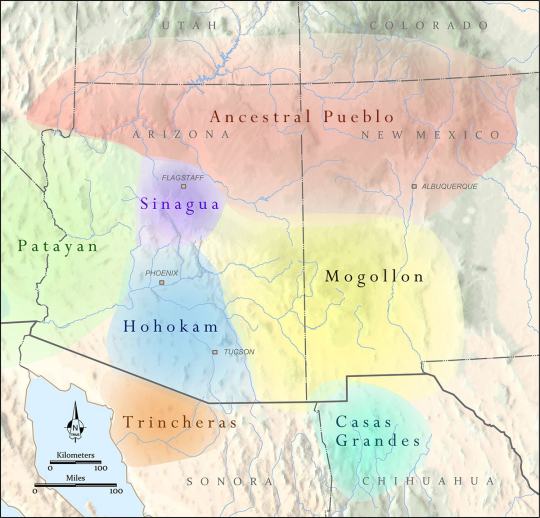
The Ancestral Puebloans as a distinct cultural group defined by similar material culture aspects arose 1200-500 BCE, depending on what you consider core cultural traits, and we generally stop talking about “Ancestral Puebloan” around 1450 CE. These were a group of people who lived in northern Arizona and New Mexico, and southern Colorado and Utah—the “Four Corners” region. There were of course different Ancestral Pueblo groups, political organizations, and cultures over the centuries—Chaco Canyon, Mesa Verde, Kayenta, Tusayan, Ancestral Hopi—but they generally share some traits like religious sodality worship in subterranean circular kivas, residence in square adobe roomblocks around central plazas, maize farming practices, and styles of coil-and-scrape constructed black-on-white and black-on-red pottery.
The most famous Ancestral Pueblo/“Anasazi” sites are the Cliff Palace and associated cliff dwellings of Mesa Verde in southwestern Colorado:

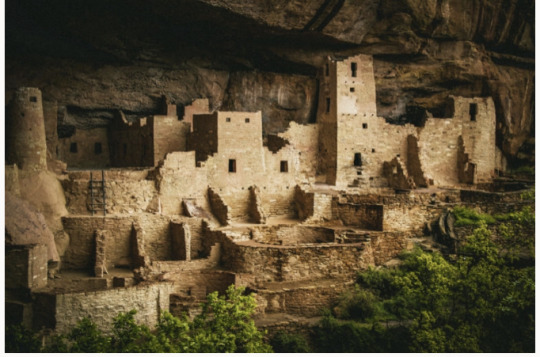
When Europeans/Euro-Americans first found these majestic places, people had not been living in them for centuries. It was a big mystery to them—where did the people who built these cliff cities go? SURELY they were too complex and dramatic to have been built by the Native people who currently lived along the Rio Grande and cited these places as the homes of their ancestors!
So. Like so much else in American history: this mystery is like, 75% racism.
But WHY did the people of Mesa Verde all suddenly leave en masse in the late 1200s, depopulating the whole Mesa Verde region and moving south? That was a mystery. But now—between tree-ring climatological studies, extensive archaeology in this region, and actually listening to Pueblo people’s historical narratives—a lot of it is pretty well-understood. Anything archaeological is inherently, somewhat mysterious, because we have to make our best interpretations of often-scant remaining data, but it’s not some Big Mystery. There was a drought, and people moved south to settle along rivers.
There’s more to it than that—the 21-year drought from 1275-1296 went on unusually long, but it also came at a time when the attempted re-establishment of Chaco cultural organization at the confusingly-and-also-racist-assuption-ly-named Aztec Ruin in northern New Mexico was on the decline anyway, and the political situation of Mesa Verde caused instability and conflict with the extra drought pressures, and archaeologists still strenuously debate whether Athabaskans (ancestors of the Navajo and Apache) moved into the Four Corners region in this time or later, and whether that caused any push-out pressures…
But when I tell people I study Southwest archaeology, I still often hear, “Oh, isn’t it still a big mystery, what happened to the Anasazi? Didn’t they disappear?”
And the answer is. They didn’t disappear. Their descendants simply now live at Hopi, Zuni, Taos, Picuris, Acoma, Cochiti, Isleta, Jemez, Laguna, Nambé, Ohkay Owingeh, Pojoaque, Sandia, San Felipe, Santa Clara, San Ildefonso, Tamaya/Santa Ana, Kewa/Santo Domingo, Tesuque, Zia, and Ysleta del Sur. And/or married into Navajo and Apache groups. The Anasazi/Ancestral Puebloans didn’t disappear any more than you can say the Ancient Romans disappeared because the Coliseum is a ruin that’s not used anymore. And honestly, for the majority of archaeological mysteries about “disappearance,” this is the answer—the socio-political organization changed to something less obvious in the archaeological record, but the people didn’t disappear, they’re still there.
352 notes
·
View notes
Text
Inktober Days 13-15
Day 13: "Rise"
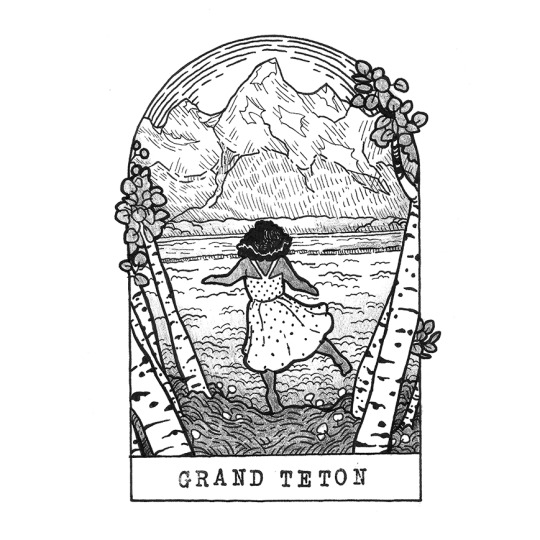
Rangers sometimes talk about their “heart parks”—the intimately special ones that make us go dreamy-eyed and nostalgic. Grand Teton is my heart park. During undergrad, I was going through a rough patch, missing my backcountry work in New Mexico and feeling out of place at Clemson. I told my friend that I “just wanted to go somewhere.” He asked if I wanted to go for a walk. I told him no, I’d like to go to the Grand Tetons. I don’t know why I decided on that particular place in that moment—I’d never been there and had only ever seen photos of the famous mountain group. But my friend said sure, we could go to the Grand Tetons. He proceeded to lead me outside student housing, checked the cardinal directions in the sky, and struck off northwest. I followed him. We walked around campus for hours that night, talking about a hundred different things. It was the first time after returning from New Mexico that I’d felt really heard, really understood, really happy.
A few months later, that friend became my boyfriend, and a few years later, that boyfriend became my husband. There was no question about where we would honeymoon. We went to Grand Teton.
Day 14: "Castle"
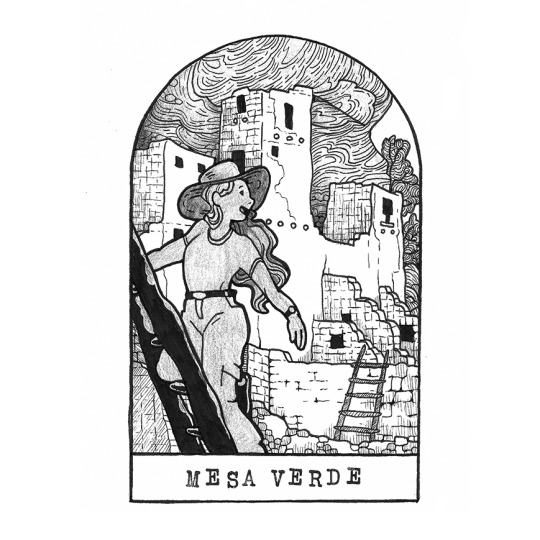
I’ve been struggling with what to say about Mesa Verde, because this site was so incredible to visit that I almost can’t put it to words. I experienced it while conducting my master’s research between stops in Navajo National Monument and Chaco Canyon. Visiting these cultural sites, tied together by sociopolitical events and natural disasters over the span of centuries, drove home how vast the network of humanity was in the Ancestral Puebloan era. These places were huge hubs of activity and massive feats of architecture—not castles, but communities humming with life, love, loss, struggle, wealth, and beauty.
Mesa Verde was also the only place I saw a ranger bring an audience to tears with the emotion in his program. I audited over two hundred interpretive programs that summer, but I remember lowering my clipboard during this particular tour of Cliff Palace, in awe of how powerfully the ranger was able to connect visitors with his own familial ties to the Ancestral Puebloans who had lived there so long ago. The goal of interpretation is to facilitate a meaningful connection between the visitor and the resource, but never have I ever seen anyone do it so profoundly as that ranger in Mesa Verde, 2011.
Day 15: "Dagger"
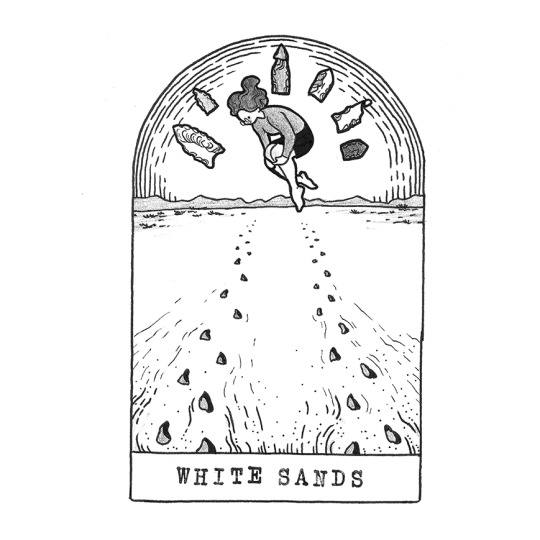
White Sands preserves practically the entire span of human history, from fragments of ancient blades up to the space shuttle and missile launches. But it's the beginning of that timeline that draws me toward this gleaming gypsum dunefield.
I remember where I was when the news dropped—in the Apgar ranger office with a handful of other Glacier rangers. I was working on my hunting and gathering program, where I discussed old facts about projectile points and atlatls, but I stopped when another ranger swore in shock. An email had come through to our NPS accounts with new research out of White Sands. Human footprints preserved in the ancient sediment had been dated--- not to the 13-16 thousand years old we typically associated with the earliest humans in the Americas, but to 23 THOUSAND YEARS OLD. In one short email, our whole office's reckoning of human history almost doubled. Our minds were blown. We celebrated like a bunch of lads after a World Cup win. This world that we walk! Footsteps over footsteps over footsteps! What a privilege.
99 notes
·
View notes
Text
A crash course in some vocabulary
Archaeology, like all sciences, has a lot of specialized jargon we use to talk about pottery. To make sure everyone’s on the same page, here’s a list of some common terms I’ll be using, what they mean, and how to pronounce them.
~ 🏺🏺🏺 ~
Ware: A broader term for a technological/cultural tradition in pottery. Typically, construction method, color, clay type, temper type, and paint type are what defines a “ware.” So Chuska Gray Ware is unslipped, usually unpainted gray clay with crushed black basalt temper. Roosevelt Red Ware is red-slipped clay with sand temper and carbon-based paint. Hohokam Buff Ware is unslipped or cream-slipped buff-colored clay with coarse sand temper, created using a paddle-and-anvil forming method and painted with red paint.
Type: Within a ware, a type is a more narrowly specific decorative style. Roosevelt Red Ware has multiple types within it, such as Salado Red (unpainted red-slipped), Pinto Black-on-red (black paint on the red in a specific radially symmetric interlocked hatched-and-bold pattern), Pinto Polychrome (same decorative style but on a white-slipped interior field), Gila Polychrome (red exterior, white-slipped interior, a usually-broken black band around the rim, black painted designs in a two- or -four-fold symmetry), Tonto Polychrome (bolder and less symmetric black-and-white designs on a red field), Cliff Polychrome, Dinwiddie Polychrome, Nine Mile Polychrome… different stylistic variations on the Roosevelt Red Ware technological/visual core. You can read more about categorizations here.
A note on naming conventions: Pottery in this archaeological tradition tends to have a two-part name: a location where it was first defined and described, and a colorway. Wares tend to be “[Broad location or broad cultural group] [Color] Ware”; types tend to be “[Specific site] [paint color]-on-[clay color].” So within Tusayan White Ware is Flagstaff Black-on-white.
———
Gila: A river in southern Arizona and a bit of New Mexico, and a lizard and a polychrome type named after it. Pronounced hee-la.
Hohokam: An archaeological term for a Native American cultural group that lived in southern Arizona and northern Sonora, defined by traits like red-on-buff pottery, massive canal systems for field irrigation, and platform mounds. It comes from the O'odham-language word huhugham, “ancestors.” They are the ancestors of the modern Tohono O’odham and Akimel O’odham people (it’s a little bit more complicated than that but that’s basically the case.)
Mogollon: An archaeological term for a Native American cultural group from central New Mexico, eastern Arizona, and northern Chihuahua. Most iconic trait is the elaborate range of corrugated and smudged pottery. Named after the Mogollon Rim, the geological formation that marks the edge of the Colorado Plateau and a drastic change in geology and climate in the northern Southwest and the southern Southwest. Along with the Ancestral Pueblo, the Mogollon culture are ancestors of modern southern Rio Grande and Zuni pueblos. Pronounced moh-guh-yon.
Olla: A water jar with a wide body and narrow neck. Pronounced oy-ya.
Polychrome: Pottery that is three or more colors (poly+chrome), most often meaning red, white, and black.
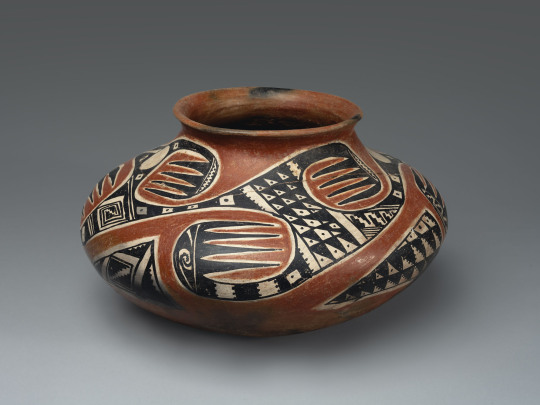
A Tonto Polychrome olla. Southeastern Arizona, 1350-1450.
Pueblo: A collective term for Native people of the Southwest US (particularly in the Rio Grande river watershed, but also Hopi and Zuni) who share cultural traits and history—most immediately notably, a tradition of living in square adobe houses in large villages, which are also each called pueblos. Ancestral Pueblo is the term for the archaeologically-defined cultural group that share these similar traits and are, generally, from the northern half of New Mexico and Arizona, and a southern strip of Colorado and Utah. The Ancestral Puebloans were formerly called “Anasazi” but that has fallen out of favor due to pushback from modern Pueblos. Also, each modern Pueblo prefers to be called a Pueblo rather than a tribe in most cases—so you say the Pueblo of Acoma, the Pueblo of Ohkay Owingeh, Picuris Pueblo, Taos Pueblo, the Pueblo of Zuni, etc.
Temper: Non-clay bits that are added to natural clays to make them easier to work with. When you buy clay from a store now, it’s already mixed and processed and ready to use. When you find clay out in nature, it’s almost never so easy. Typically, you have to mine/harvest clay from riverbanks or cliffsides, and it’s hard and dried; then you have to grind the hard clay up into fine particles, and mix them with water. But natural clays are often puddly and don’t always hold together well, so you add temper, something hard and grainy to make your wet clay stick together more easily and make it good to work with! Temper can be sand, ground-up rock, ground-up shell, or even ground-up bits of other broken pottery. What different people used as temper is one defining feature of a pottery ware and pottery tradition.
Sherd: A broken bit of pottery. NOT shard. When it’s pottery, it’s “sherd.”
Slip: Very runny wet clay. It’s used to help attach clay pieces together, but more pertinently here, plain-colored pots are covered with an even layer of bolder-colored clay slip to get the desired color pot.
Smudging: A decorative style that potters made during the firing stage. They would have open pit-fires for firing their pottery, and cover the desired part of the pot with a layer of charcoal or ash. This creates a carbonized, reducing environment—that is, a lot of carbon, and little oxygen. This creates a smooth, inky black finish on the completed pot.
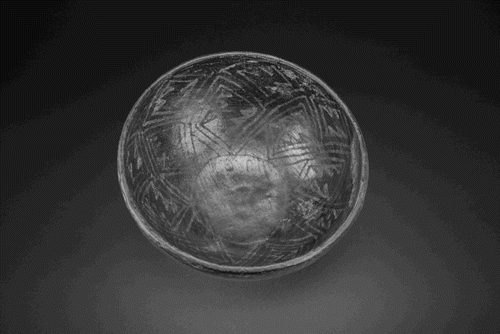
A Starkweather Smudged bowl. Mogollon, western New Mexico, AD 900-1200.
Vessel: Another word for pot, basically. Means a ceramic container of some sort. Bowls, jars, ladles, pitchers, mugs, etc are all vessels; effigies and statuettes are not.
42 notes
·
View notes
Text
In an unthinking act of destruction by a hopeful treasure hunter/looter, a 1,000-year-old archaeological site in Utah's Fort Pearce Wash Area has suffered irreversible damage. The perpetrator, a 51-year-old man, dug a massive 15-foot-deep trench in search of treasure, disturbing a site rich in history and significance.
The area, renowned for its collection of over 100 petroglyphs dating back 500 years or more, is now tainted by this reckless act. The vandalism has disrupted crucial archaeological evidence, potentially erasing invaluable insights into the region's ancestral Puebloan culture.
35 notes
·
View notes
Text
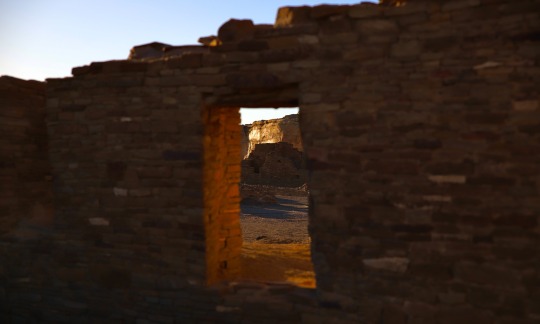
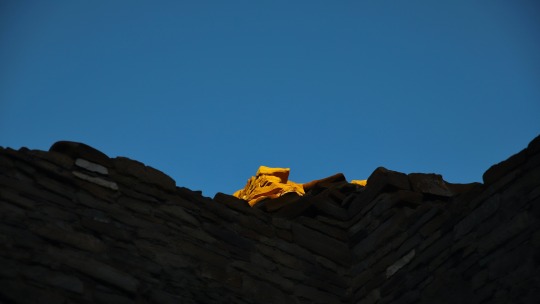
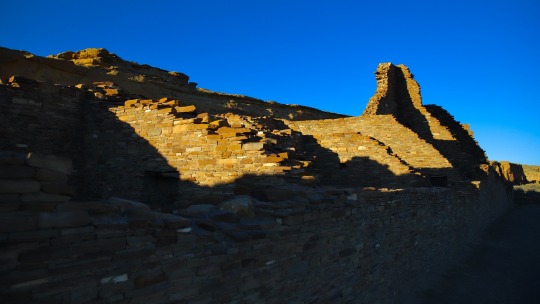
#chaco culture national historical park#chaco canyon#New Mexico#Anasazi#ancestral puebloan#history#archaeology#adventure#travel#my photo#southwest#desert#photography#aesthetic#landscape#ruins
122 notes
·
View notes
Note
wait i’d love to hear yr thoughts about tony hillerman bc i grew up in new mexico (and still live here lol) & always thought he was just like normal pulp mystery
--
Normal pulp mystery with ten thousand digressions to talk about clouds and rocks. Hahaha.
IDK, do we use "pulp" like this now? (Genuine question.) His mystery style was fairly standard for the cozy end of mystery publishing if we mean not hardboiled, not police procedural, etc. rather than the cozy mysteries that are actually cozy with their cat-themed bookstores and such.
When I was a kid, my mother was obsessed with one day moving to Santa Fe, so for holidays, instead of seeing family, we'd go there. She had another phase where she was convinced she'd move to Orcas Island one day where, again, we spent holidays up around Seattle repeatedly. In both cases, there were things that happened to be culturally big at the time and easy to find that were also connected to local indigenous stuff.
What makes Hillerman interesting is that, despite being a white guy, he focused a lot on the Navajo reservation. It probably doesn't seem like much of anything if you're from that part of the world, and there are certainly some inaccuracies in the books that he himself would talk about in subsequent forwards, but they were a highly accessible introduction for someone who'd otherwise have had no reason to know about anything like that. I don't think that's so true now with more media on the scene, but this was the 90s at the height of his popularity (and of the series actually being good).
The thing is, they are normal mysteries. That's what made them work: people who didn't have a reason to care about the setting or particular political struggles bought them because they bought mystery novels in general. And then there was some other stuff in there too, but mostly, they're just fun genre fiction. One thing they did that I can't recall any other 90s media with a thousandth the reach doing was depict Indigenous characters who don't know that much about other indigenous cultures. There are a couple of books where the Navajo leads have to deal with Hopi stuff, and it's very clear these are different people with different communities. That sounds so incredibly small and obvious, but these books were sold in airport bookstores all over the country to an audience that knew literally nothing.
As for the books themselves, I like all the contemplative noodling about the landscape and the sense of place. That's something I often like in a mystery novel, especially one set somewhere I don't live.
The characters are compelling aside from their romances, which are horrendous. (Leaphorn has a wife who is a nonentity until she dies between books of something stupid, and then she comes up endlessly as the love of his life. Chee is a moron who makes bad choices and forces us to hear about them at great length.)
There's a bunch of archaeology stuff in some of the books, and I was a kid obsessed with archaeology. Honestly, our understanding of, e.g., Ancestral Puebloans is way different than it was in the 70s when some of these books came out, but it was still interesting stuff.
The adaptations now... Robert Redford bought the rights an eon ago and has been trying to make fetch happen ever since. One of the attempts was a set of three tv movies for PBS's Mystery! They hired Chris Eyre and unfridged Leaphorn's wife. There's a lot more humor relative to Hillerman's often rather gloomy style. And I am weak to buddy cops, to age gap with obnoxiously over-enthusiastic younger parties, and to OT3s.
34 notes
·
View notes
Photo
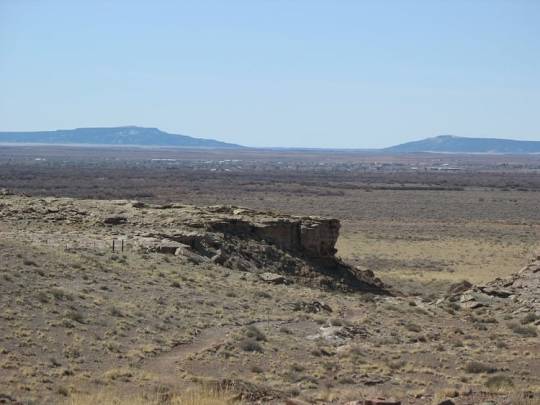
Homolovi
Homolovi or Homolovi State Park (formerly: Homolovi Ruins State Park) is a cluster of archaeological sites that contains the ruins of eight pre-Columbian Ancestral Puebloan (Anasazi) and Hopi pueblos in addition to some 300 other remains and petroglyphs. Homolovi lies within sight of the Little Colorado River in a floodplain, 2 km (4 miles) northeast of Winslow, Arizona in the United States. Archaeologists believe that Ancestral Puebloan peoples and the ancestors of the Hopi tribe once occupied these settlements, which spread out along a 32 km (19 miles) corridor on the Little Colorado River, at different intervals of time from c. 1250-1425 CE. Two pueblos - Homolovi I and Homolovi II - each contained more than 1,000 rooms in ancient times, and 40 ceremonial kivas are scattered throughout the park. The Homolovi ruins are unique in the ancient Southwest as they have helped archaeologists better understand the cultural transitions and social changes that occurred in the region during the 13th through 14th centuries CE. Four of the sites at Homolovi are listed on the U.S. National Register of Historic Places, and the park is currently managed by the Arizona State Park system.
Learn more about Homolovi
57 notes
·
View notes
Photo






Chaco Canyon is one of the most inaccessible National Parks in the country. Although it is well-known, there is no easy way to get there and there are no amenities once you arrive. The closest town is 60 miles away. There’s a gas station on the main road, near where you turn off on Highway 550. That’s the last opportunity for gas, water, snacks, sunscreen, or supplies.
There is no good road to Chaco Canyon. Getting there is like an Indiana Jones quest. The jolting journey evolves from a deceivingly decent dirt road to not so good to face rattling off your skull for a couple of miles. Also, there's a large wash on the way, which can become impassable during heavy storms. Don’t be daring, because there’s no cell phone reception either.
#native american#new mexico#ancestral puebloan#puebloan#chaco canyon#road trip#travel#weekend getaway#vacation#culture#history#heritage
64 notes
·
View notes
